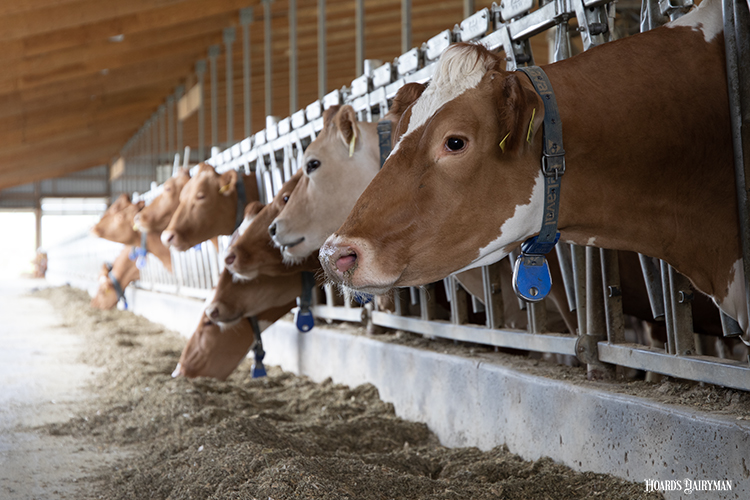
Just get her bred back – that is the name of the game. Activity monitoring systems (AMS) used through the first 60 days in milk can serve as a window into your herd’s reproductive status.
“It’s up to us to identify and validate robust markers of reproductive outcomes,” said Stefan Borchardt, a German dairy researcher on Dairy Science Digest, a monthly podcast from the University of Missouri. “Activity data within the voluntary waiting period is just one of those,” he continued.
He and his team researched linkages of AMS data and transition cow health data to create a “digital phenotype” for cows as they transition into lactation.
Correlations with conception
The digital phenotype will help dairy managers better understand the physiological changes happening in the herd to best manage transition pens. These include as ketosis, inflammation, compromised follicular development, and steroid production.
“Cows that never show estrus in the first 60 days have worse reproductive outcomes,” Borchardt explained. Just over 20% of cows experienced anestrus in his dataset. He found transition cow health events carry over into reproduction.
These anestrus cows were less fertile, taking 29 days longer to settle. The strongest predictors of poor reproduction were found to be uterine related: stillbirth, retained placenta, and metritis. As the number of transition health events rose, percent prevalence of anestrus also climbed – 23.4% for one event and 32.5% for two or more negative health events.
Targeted reproductive management
Identifying the anestrus cows early on allows the opportunity to get them back on track using synchronization strategies to prevent long days in milk.
Sensor data can also aid in managing input costs by optimizing breeding decisions. Borchardt and his team found when using sexed semen, “It was even more important for them to have early resumption of estrus expression.” Sexed semen service pregnancy to A.I. increased with every estrus completed prior to breeding: 42.5%, 50.9% and 55.4% for 0, 1, or 2-plus heat events logged. In the future, software programs could create an algorithm toward a breeding decision tool to help manage these risks.
Success over time
Persistency and data analysis will help your team track success over time. Borchardt recalls progress as he worked with one specific herd through the years. “In 2012, they had a pregnancy rate of 11%, and now they are consistently running 31% to 32%,” he shared. Transition cow health management coupled with the insight of the software helped get them there. Data from the sensors helped changed the mindset of the technicians.
While it’s possible to draw blood and milk samples or complete rectal palpation with ovary scans to provide the data needed without on-farm sensors, the issue is it is very time consuming and expensive to collect on a commercial basis. The beauty of the sensor system is that it provides real time data without the disruption to the cow or cost and delay of analysis.
To read more on this topic, read the Journal of Dairy Science article, “Effect of transition cow health and estrous expression detected by an automated activity monitoring system within 60 days in milk on reproductive performance of lactating Holstein cows.” Also, go to any of your favorite podcast platforms and listen to the University of Missouri Extension’s Dairy Science Digest.








